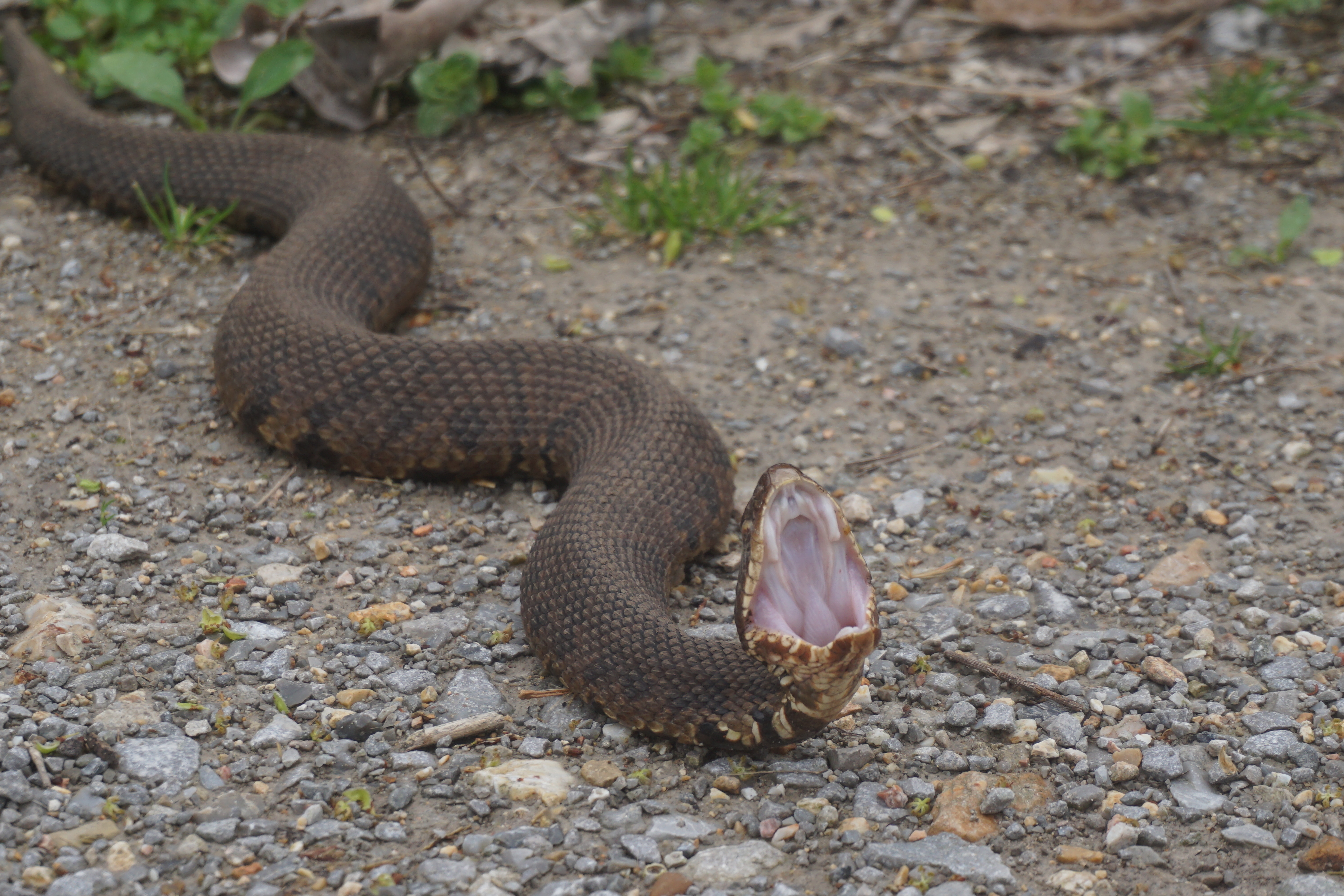Mention “Snake Road” and you are guaranteed to get an emotional response. At least that was my experience after visiting the so-called snake road in Union County, Illinois earlier this month. Some people were totally thrilled and begged me to bring them next time I go, some wondered what was wrong with me for going there voluntarily in the first place, and still others became visibly disturbed to the point that we couldn’t even continue the conversation. I honestly had no idea that the concept would cause such a stir. I guess in retrospect I probably should have.

What is Snake Road?
Snake Road is actually a 2.5 mile stretch of LaRue Road located within LaRue-Pine Hills Research Natural Area in Shawnee National Forest. The gravel road runs along the base of large limestone bluffs directly adjacent to LaRue Swamp. A large number of replies and amphibians spend the winter hibernating in the bluffs and the summer season living in the swamp. There are actually approximately 56 species of reptiles and amphibians that have been recorded in the area, and many in large numbers. In order to help provide a safer migration for the animals, the Forest Service closes the road to vehicular traffic in the spring and fall (March 15-May 15 and September 1-October 30). However, fortunately for this guy and for many ‘herp’ enthusiasts, snake road is open to foot traffic during this time.

Does ‘Snake Road’ live up to the hype?
You bet it does! At least for me on this particular trip, the first time I have ever been there. I left St. Louis on a Sunday morning for the two hour drive to LaRue-Pine Hills. The forecast called for temperatures in the 70’s and sunny, so I had high hopes that the animals would be active. I had heard that the small parking lot can get crowded, and expected there to be something of a crowd when I got there. Much to my surprise, I arrived to find the parking lot totally empty and had the whole place to myself. Five miles and 4 hours later, I returned to find about 10-12 cars in the lot. I had also seen over 20 cottonmouths during my hike as well as 1 water snake (possibly yellow-bellied). In addition, the scenery was spectacular!

Cottonmouth heading to the swamp 
LaRue Rd.
Cottonmouths Galore
I had only been walking about 1/2 mile before I saw my first cottonmouth. The snake was warming itself on a log just above a small pond only feet from the road. A few yards further there was a second one, but this one was actually in the water on the edge of the road. For the next 2 miles to the far gate, I came across 5 more. Each of these cottonmouths were actually on the gravel road, and traveling from the side of the bluffs into the swamp. Each snake was very calm, and allowed me to approach and photograph. If I got too close, the snake was quick to open its mouth revealing the namesake white coloration of their mouth.
By that time the temperatures had warmed up quite a bit and the sun was trying to come out. After a quick lunch, I started to work my way back to the truck. About 1 mile in from the far gate (1.5 miles from my car), cottonmouths were everywhere. I counted at least 13 more, including one spot where I could see 3 snakes at one time on the road. After crossing the gate that closes the road and only a few yards from my vehicle, I let my guard down only to find myself just a few feet away from stepping on another cottonmouth (one of two in the parking lot). I came to Snake Road hoping to see a cottonmouth, but never would have believed that I would see at least 20 in one day.
The Scenery
The hike was nothing short of beautiful. The limestone bluffs were spectacular, providing a perfect backdrop. Spring wildflowers were in bloom, including larkspur, Virginia bluebells, phlox, dutchman’s Breeches, Bellwort and others. The swamp, when close to the road and visible, was scenic and a nice change from the norm. Lastly, the towering tulip poplar and sycamores that reign over the oaks, maples, and hickories were specimens all their own. The trail itself is a gravel road, wide and flat, lending itself to all skill levels of hikers.
Other wildlife
The constant fear of getting bitten by a venemous snake while by myself far from any hospital may have kept my eyes on the ground, but I did manage to spot a few birds on Snake Road. Great egrets, great blue herons, and wood ducks inhabited the swamp. Yellow-throated warblers, northern parula, white-eyed vireos, and many more common birds were heard and seen frequently along the road. I also saw my first northern and Louisiana waterthrush of the year on the trail. I also glimpsed many turtles and frogs, most scuttling away before I could get a photo or ID. Lastly, I must have seen 50 squirrels along the road, many acting more like suburban squirrels and showing little fear.


Takeaways
I went into this hike with a lot of unknowns, and really was just hoping that Snake Road lived up to its name and offered up a few snakes to photograph. Obviously it exceeded my expectations, and I was surprised by the beautiful environment. The only thing lacking on the day I went there was species diversity, but its hard to complain about that. Shawnee National Forest provides many great opportunities for the outdoorsman, and this is just one more to add to the list. I will most definitely return to Snake Road, and I suggest that you make plans to someday as well.

For more information and directions, check out this website:
https://www.fs.usda.gov/Internet/FSE_DOCUMENTS/stelprdb5106391.pdf




























